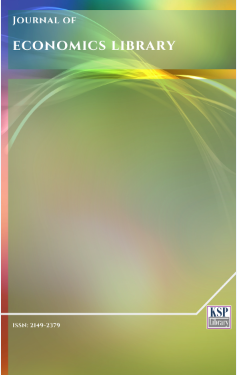Trends in the accumulation of net foreign reserves since World War II
Abstract
Abstract. Taking a historical perspective, this paper observes the trend in net foreign reserves by examining data that extend as far back as 1948. It looks broadly at how reserve coverage has changed over time and the benefits and costs of holding such reserves. Moreover, it studies which countries are the biggest holders of reserves and how much they have as well as the reasons why they hold these amounts. An accompanying spreadsheet workbook contains the data for the graphs and analysis of this paper. Data come mainly from the International Monetary Fund’s International Financial Statistics database, supplemented in some cases by national sources.
Keywords. Foreign reserves, Gold, Monetary base, Imports, Reserve adequacy.
JEL. E58, F31.
Keywords
References
Bank of Thailand, (1998). Annual Economic Report. [Retrieved from].
Bao, C., & Paine, E. (2017). Insights from the Federal Reserve’s weekly balance sheet, 1942 -1975. Unpublished paper, Johns Hopkins University.
Bordo, M., Monnet, E., & Naef, A. (2017). The gold pool (1961-1968) and the fall of The Bretton Woods System. Lessons for central bank cooperation. NBER Working Paper No.24016. doi. 10.3386/w24016
Dempster, N. (2008). What does a US recession Imply for the gold price? World Gold Council Gold Report, April. [Retrieved from].
Eichengreen, B. (2014). International currencies past, present and future: Two views from economic history, Bank of Korea Working Paper No.2014-31. [Retrieved from].
Eichengreen, B. (2008). Globalizing Capital: A History of the International Monetary System. Princeton, New Jersey: Princeton University Press.
ECF, (2006). European Central Bank. International relations committee task force. The Accumulation of Foreign Reserves, European Central Bank Occasional Paper Series No.43. [Retrieved from].
Fukuda, S., & Kon, Y. (2010). Macroeconomic impacts of foreign exchange reserve accumulation: Theory and international evidence, ADBI Working Paper Series No.197. [Retrieved from].
International Forum of Sovereign Wealth Funds, (2017). Hunting unicorns: Bocconi sovereign wealth fund, Annual Report 2016. [Retrieved from].
International Monetary Fund, (1953). The adequacy of monetary reserves, IMF Staff Papers. [Retrieved from].
International Monetary Fund, (2018). International Financial Statistics database.
International Monetary Fund, (2010). Balance of payments and international investment position manual,Sixth Edition (BPM6), Series 2009. [Retrieved from].
International Monetary Fund, (2016). Guidance note on the assessment of reserve adequacy and related considerations, IMF Staff Papers, [Retrieved from].
International Monetary Fund, (n.d.). Assessing reserve adequacy. [Retrieved from].
International Monetary Fund. World Currency Composition of Official Foreign Exchange Reserves (COFER) database. [Retrieved from].
Johnson, H. (1969). The case for flexible exchange rates. [Retrieved from].
Mohanty, M.S., & Turner, P. (2006). Foreign exchange reserve accumulation in emerging markets: What are the domestic implications?, BIS Quarterly Review, September. [Retrieved from].
Monnet, E., & Puy, D. (2015). Foreign reserves and international adjustments under the Bretton Woods system: A reappraisal, Preliminary draft prepared for the 2016 American Economic Association meeting (Economic History Association session), December.
Park, D., & Estrada, B.G. (2009). Are developing Asia’s foreign exchange reserves excessive? An empirical examination, Asian Development Bank Economics Working Paper Series, No.170. [Retrieved from].
Sindreu, J., & Bird, M. (2017). A decade after the crisis, King Dollar is the World’s Tyrant, Wall Street Journal, November 26. [Retrieved from].
Sheng, A. (2009). From Asian to Global Financial Crisis: An Asian Regulator’s View of Unfettered Finance in the 1990s and 2000s. New York: Cambridge University Press.
U.S. Department of the Treasury. Office of International Affairs, (2017). Foreign exchange policies of major trading partners of the United States, Report to Congress, October. [Retrieved from].
DOI: http://dx.doi.org/10.1453/jel.v5i3.1762
Refbacks
- There are currently no refbacks.
.......................................................................................................................................................................................................................................................................................................................................
Journal of Economics Library - J. Econ. Lib. - JEL - www.kspjournals.org
ISSN: 2149-2379
Editor: [email protected] Secretarial: [email protected] Istanbul - Turkey.
Copyright © KSP Library

